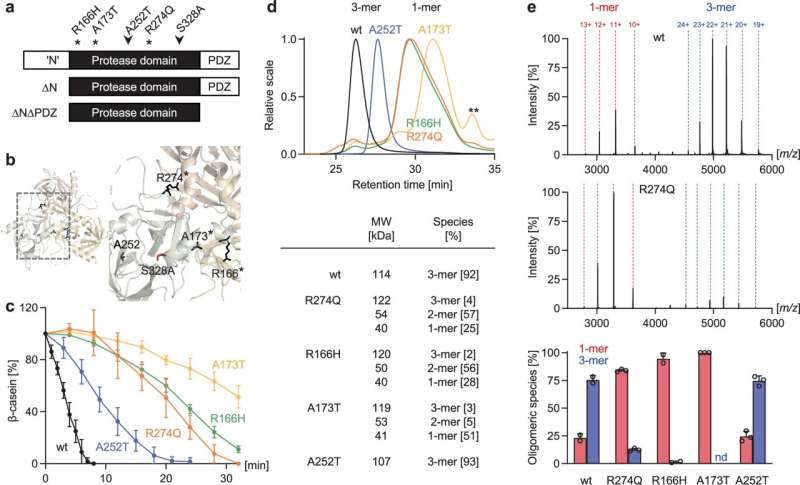This article has been reviewed according to Science X's editorial process and policies. Editors have highlighted the following attributes while ensuring the content's credibility:
fact-checked
peer-reviewed publication
trusted source
proofread
Team explores strategies for correcting mutations that cause stroke

Cerebral autosomal recessive arteriopathy with subcortical infarcts and leukoencephalopathy (CARASIL) is a rare, severe, and deadly genetic disorder characterized by damage to small blood vessels in the brain. The condition triggers strokes. It is caused by mutations that lead to a loss of function of the protease HTRA1. This enzyme plays an important role in maintaining equilibrium in the extracellular matrix. If its function is disrupted, it can no longer cleave and break down proteins, which eventually results in clinical manifestations.
"There is no cure as yet for CARASIL; therapy is limited to treating the symptoms of patients," says LMU neuroscientist Professor Martin Dichgans, Director of the Institute for Stroke and Dementia Research at LMU University Hospital and principal investigator in the SyNergy Cluster of Excellence.
Dichgans and his colleague Michael Ehrmann, Professor in the Faculty of Biology at the Center of Medical Biotechnology at University of Duisburg-Essen, are principal investigators of a study that was recently published in the journal Nature Communications.
The researchers investigated strategies for reversing the harmful effects of CARASIL-causing mutations. In close cooperation, the two laboratories combined in-vitro and in-vivo methods and computer-based analyses to repair the structure and catalytic function of the mutated HTRA1 enzyme.
"Disease-causing protein conformations that lead to loss of function are difficult to treat with conventional pharmaceutical compounds," explains Ehrmann. To restore the activity of the mutated HTRA1, the team developed three independent biological and biochemical approaches, which involve trans-complementation of proteins, supramolecular chemical ligands, and peptide ligands.
"In all three cases, the repair mechanism is based on restoring the integrity of the active center of the enzyme," explain postdoctoral researchers and authors Nathalie Beaufort from Dichgans' team and Melisa Merdanovic from Ehrmann's team. The new findings show that the correction of pathogenic protein conformations is possible with rational strategies, which has promising implications for precision medicine.
More information: Nathalie Beaufort et al, Rational correction of pathogenic conformational defects in HTRA1, Nature Communications (2024). DOI: 10.1038/s41467-024-49982-8




















